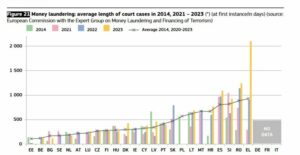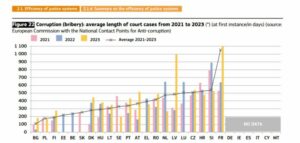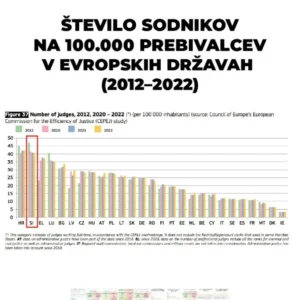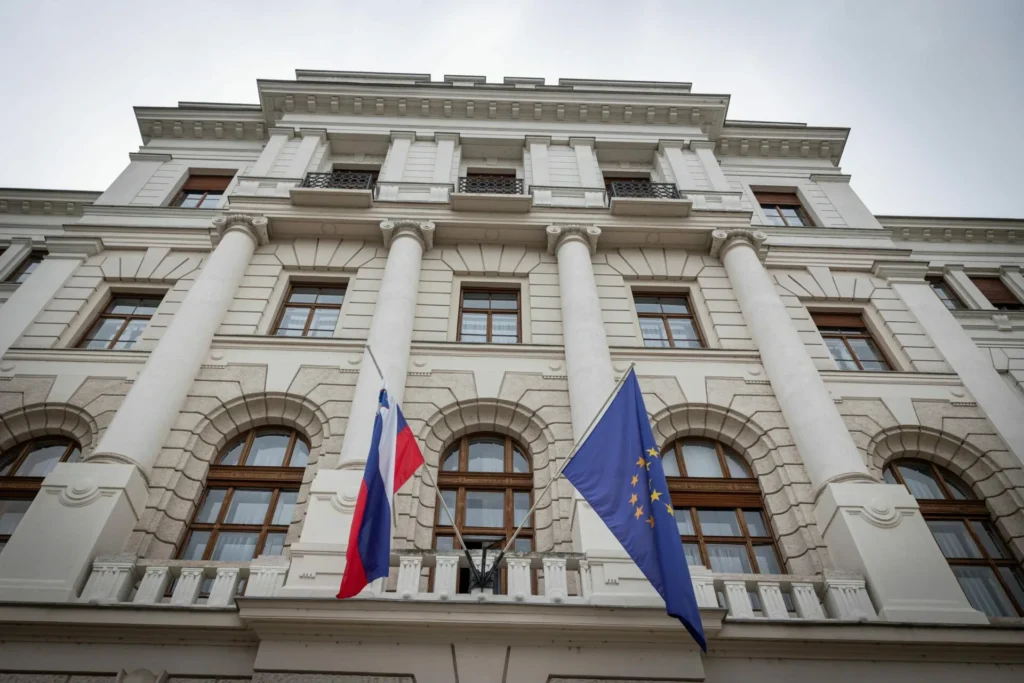Every week, we hear a new anecdote about how slow, inefficient, irrational, and often unjust the Slovenian judiciary truly is. But anecdotes and subjective feelings have now also been backed up by numbers. In the recent annual report entitled the EU Justice Scoreboard, Slovenia performed predictably badly.
The EU Justice Scoreboard is an annual report published by the European Commission. It was first published in 2013, so this is the 13th regular edition. It is designed to monitor and compare the efficiency, quality and independence of justice systems in all Member States of the European Union.
On the tail end, when it comes to corruption and money laundering
Slovenian courts continue to be among the slowest in the European Union when it comes to corruption and money laundering cases.


We are at the bottom of the rankings in both money laundering and corruption prosecution cases. On average, first instance money laundering cases are concluded after around 800 days, while first instance corruption cases are concluded after around 500 days. It should be noted that the report only follows the processes up to the end of the first stage. The problem with Slovenian justice is, of course, the subsequent instances, which are too slow to judge and at the same time do not take responsibility – instead of deciding on the contents of the cases, which they have all the power to do, they end up overturning the judgments and sending them back to the lower instance courts. This, of course, is how the higher courts wash their hands, but it also prevents justice from being done in time – proceedings on retrials are often time-barred before there is a chance for justice to be served.
What the European report fails to see
Despite the poor results, the annual report seems to be tailor-made for Slovenian justice to at least hide in the average, instead of making it clear that we are the European patient in the field of justice. While the Minister of Justice, Andreja Katič, and the President of the Supreme Court of the Republic of Slovenia, Miodrag Đorđević, like to boast that the number of backlogged cases in our courts is decreasing, real examples show how slowly the Slovenian judicial mills are really grinding.
It should also be pointed out that Slovenia is at the very top of Europe in terms of the number of judges, and these same judges recently got their “happy ending” when the Golob government increased their salaries to practically the level of the salaries of ministers.

Slovenia has twice as many judges per 100,000 inhabitants as the European average, and the amount of money we taxpayers spend on justice is also above average. In fact, in 2022, Slovenia spent 107.1 euros per capita on justice. Expressed as a percentage of GDP: we have allocated 0.38 percent of GDP to the judiciary, which is well above the European average (0.31 percent).
The problem is not only backlogs, but also unfair trials
In addition to the backlog of cases, the biggest problem of Slovenian justice is the quality of the trials or the injustices that are being committed.
The European Court of Human Rights (ECHR) found that of the 373 Slovenian cases it has ruled on so far, they have found at least one human rights violation in as many as 342 of them. This is truly worrying data, as almost 92 percent of Slovenian court judgments have therefore violated the human rights of its citizens, and we are at the very top of the European list in this respect. In other words, Slovenia has the worst courts in Europe. The last column shows how many judgments with at least one human rights violation were handed down in each country per million inhabitants. Here, again, Slovenia is just below the top, with 164.51 judgments. Looking towards the countries with the best-performing judiciaries is particularly meaningful. Take Germany, for example. It had only 2.4 judgments per million inhabitants, in which the ECHR found human rights violations. With a population of 83 million, there were fewer cases sent to the ECHR than from Slovenia, and even of those that were sent, they found that the judgement violated human rights in only 55.9 percent.
I. K.


